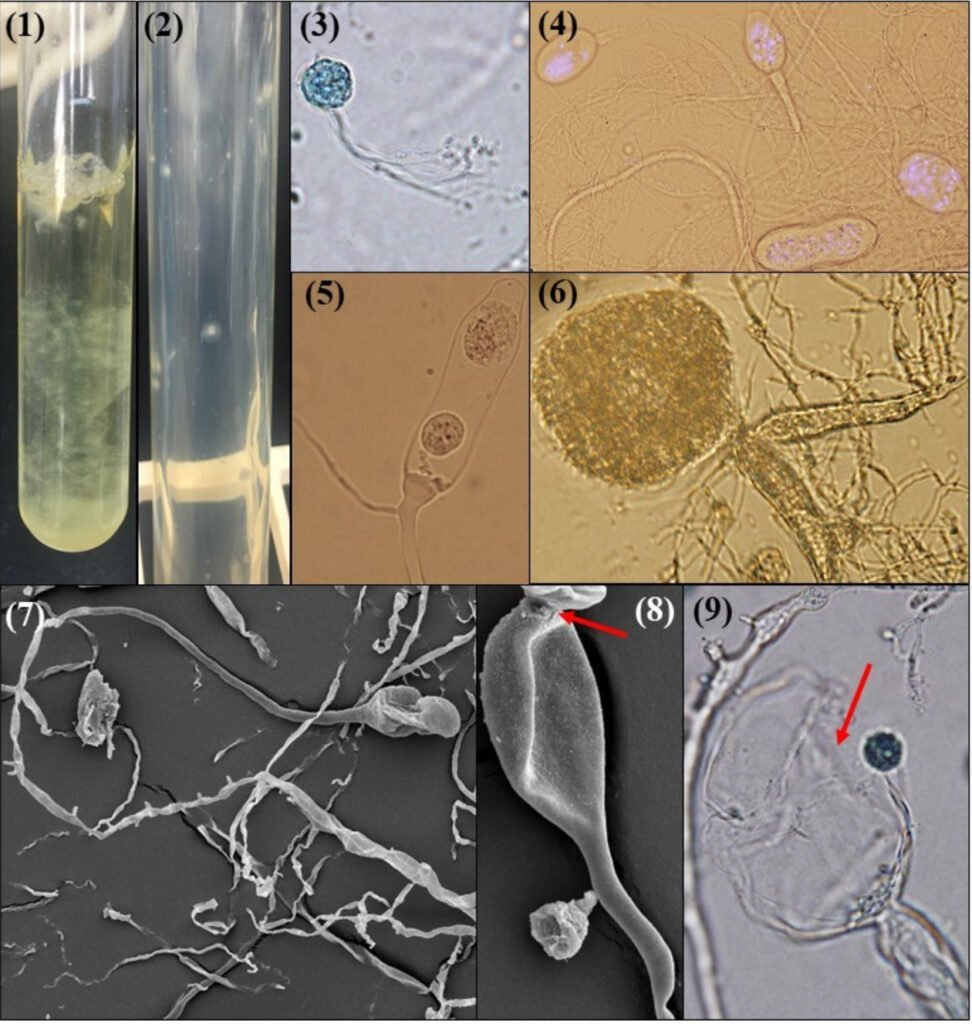Aestipascuomyces was the 19th anaerobic fungal genus to be described. It was isolated independently by two different research teams in 2020 from the faeces of wild Barbary Sheep and Alpaca, respectively. Aestipascuomyces has a monocentric thallus and polyflagellated zoospores. As such, it has similar gross morphological characteristics to Neocallimastix, Feramyces, and Ghazallomyces.
The genus Aestipascuomyces was formally classified in a publication which involved both of the research teams that independently isolated the genus (Stabel et al., 2020). The genus name is derived from the Latin words for summer (aestas) and pasture (pastura), indicating the apparent enrichment of the genus in animals grazing on summer pasture. The type species is called A. dupliciliberans, which is derived from the Latin words for double (duplicus) and liberating or releasing (liberans). This name refers to the dual zoospore release mechanism of A.dupliciliberans, which is both via an apical pore and sporangial wall rupture. Interestingly, this unique feature has not been observed in any other anaerobic fungal genus to date. The genus type strain is R4. To date, no other species have been described for the Aestipascuomyces genus.
Previous culture-independent surveys have shown that members of the genus Aestipascuomyces are not widely distributed in nature, and have been identified in only a few animals. Notably, Aestipascuomyces represents the first cultured representative of the clade SK4, which was originally discovered and reported as part of a culture-independent survey (Kittelmann et al., 2012). This discovery highlights the importance of both culture-dependent and culture-independent methods when exploring the diversity of anaerobic fungi, and understanding their ecological distribution.
Morphology

The images shown above are of the Aestipascuomyces dupliciliberans type strain R4.
In liquid medium, Aestipascuomyces produces a heavy fungal biofilm-like growth that loosely attaches to the glass surfaces of the tube (Image 1). On solid roll agar media, it forms circular, white filamentous colonies with a white center of sporangia (Image 2).
Microscopically, Aestipascuomyces produces polyflagellated zoospores (Image 3). It has monocentric thalli with filamentous anucleate rhizoidal systems (Image 4). Both endogenous (Images 5 & 6) and exogenous (Image 7) sporangia are produced. Zoospores are released through an apical pore (Image 8, arrow) or rupturing of the sporangial wall (Image 9, arrow) .
Sequence Information
No sequenced genome is currently available for Aestipascuomyces. For the latest update regarding publically available genomes for this genus, please see here.
For the A. dupliciliberans type strain R4 that is pictured above, the sequence for the region encompassing ITS1, 5.8S, ITS2 and D1/D2 LSU is available in the NCBI database (accession number MW019494.1).
